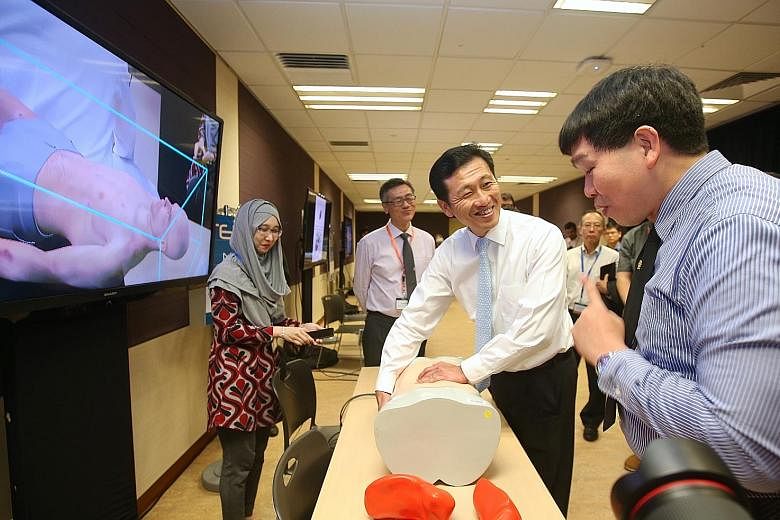Medical students in Singapore will soon be able to see a patient's abdomen through X-ray vision.
Simulated X-ray vision, that is.
In about a year, they can use an augmented reality program that will enable them to see and feel the insides of an abdominal manikin, and learn about diseases and symptoms.
Called MediSIM, the program allows the students to learn about the human anatomy without causing inconvenience and pain to real patients.
Users don a headset and examine the abdominal manikin, which has interchangeable organs. They can see and feel the physical symptoms of the virtual patient.
"This is no substitute for real patients, but this can allow students to get some clinical experience, especially early on, without inconveniencing our patients, " said one of the creators of MediSIM, Associate Professor Erle Lim of Yong Yoo Lin School of Medicine at the National University of Singapore (NUS).
The program, which was developed with Carnegie Mellon University, piloted in Singapore this year.
MediSIM is on show at the second National Conference on Technology-Enhanced Learning, hosted by NUS. The event features various ways of incorporating technology in education.
Other innovations include a software to help educators and students create augmented reality scenes and projects with ease.
The ConJAR software, which runs as a mobile application, allows users to design and showcase 3D augmented reality scenes without prior training.
For example, if a professor wants to teach about the brain, he can download a 3D image from the Internet, and create a model that can be turned and shifted while he is conducting his lesson.
The conference features speakers from overseas, including Australia and the United States, as well as student speakers from local universities.
At the opening ceremony yesterday, Education Minister (Higher Education and Skills) Ong Ye Kung said technology will affect both the way we teach and learn.
He said it will enable more effective teaching, from allowing resources to be shared online to improving understanding through visualisation tools and gamification, and allow students to experience learning more thoroughly.
He said: "Confucius said, 'When I hear, I forget, when I see, I remember, when I do, I understand.' With gamification, we can add one more line: 'When I play, I will remember and understand at the same time.'"


